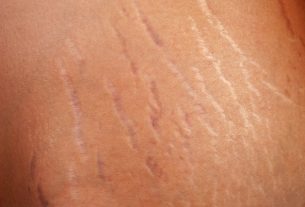Frontoplasty is a plastic surgery that aims to reduce the forehead, in order to make the face more symmetrical, or raise the eyebrows, reducing wrinkles and expression lines, and can be associated with other aesthetic procedures, such as blepharoplasty, for example.
Frontoplasty is a simple procedure that can be performed under local or general anesthesia, depending on the objective of the surgery, and must be performed by a specialized plastic surgeon.
Recovery from this surgery is simple, it is only recommended that the person rest and take care of the scar according to medical advice, which normally involves cleaning the area and applying healing ointment.

When is it indicated
Frontoplasty is normally indicated when the person wishes to reduce the size of the forehead, in order to make the face more proportional and symmetrical. Furthermore, it can be used to combat signs of aging, such as wrinkles and expression lines, which is done by raising the eyebrows.
It is important that an evaluation be carried out with the plastic surgeon to find out the best procedure and technique to be used, as this can vary according to the objective of the treatment, skin characteristics and facial structure, in addition to being able to assess the possibility of and the need to complement frontoplasty with other surgical procedures, such as blepharoplasty, for example, which is performed to remove excess fat from the eyelids and lift the eyes. Learn more about blepharoplasty.
How frontoplasty is performed
Frontoplasty can be done under local or general anesthesia, depending on the type of frontoplasty. In general, frontoplasty can be performed using two techniques:
- Frontoplasty with coronal incision, which is the most common type of frontoplasty, performed under general anesthesia, and consists of making a cut in the scalp, behind the hairline, which can leave a scar;
- Endoscopic frontaloplasty, in which small incisions are made in the scalp, behind the hairline implantation line. This type of procedure is related to shorter recovery time and postoperative swelling, as well as a reduced chance of temporary loss of local sensitivity, however it corresponds to a more expensive and longer procedure.
After making the cut, the doctor detaches the scalp, preserving local nerves and vessels, and then removes a strip of scalp, in the case of forehead reduction, and repositions the skin in the correct location.
Surgery time may vary according to the complexity of the surgical procedure, lasting between 30 minutes and 3 hours.
What is recovery like?
After surgery, it is recommended that the person remains in the hospital until the anesthesia wears off, and may be discharged on the same day. It is recommended that the person remains at rest for around 48 hours and avoids lowering their head, and it may also be recommended that the person avoid physical activity for up to 30 days.
In some cases, the use of a bandage may be indicated to avoid exposing the scar and to guarantee the result of the procedure. It is also recommended to carry out daily hygiene of the scalp and scar, and the application of an anti-inflammatory and anti-inflammatory ointment. healing, in some situations.
Possible complications
Swelling in the face is a possible complication that can arise after surgery and can last up to 10 days, improving as healing occurs. In addition, bruising and infection may also appear at the surgical sites, which can affect the nerves in the facial region and reduce sensitivity at the site of the scar, which can last up to 3 months or be permanent.
A scar on the scalp can cause local hair loss and can be treated with hair implants, an aesthetic procedure where artificial strands are placed in the area where the hair was lost. However, most complications after surgery resolve without problems.
Another aesthetic procedure that can also be used to raise the eyebrows, reducing the size of the forehead and promoting results similar to frontoplasty, is botox, being considered a safer option with fewer complications.

Sign up for our newsletter and stay up to date with exclusive news
that can transform your routine!
Warning: Undefined array key "title" in /home/storelat/public_html/wp-content/plugins/link-whisper-premium/templates/frontend/related-posts.php on line 12
Warning: Undefined array key "title_tag" in /home/storelat/public_html/wp-content/plugins/link-whisper-premium/templates/frontend/related-posts.php on line 13



